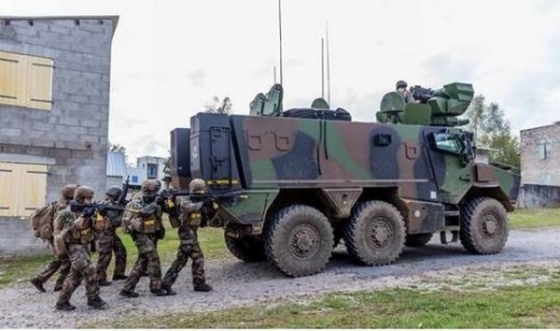
Discover the geography of army training areas: lines of defense
A few days ago, I dedicated a post to a project to redevelop La Fayette bivouac in the Coëtquidan camp (read over here). This includes building infrastructure to accommodate 174 soldiers and their vehicles including VBCI and the Griffin.
I return to this to determine the reasons for the reorganization of this camp.
The classification of training spaces has recently evolved in the military. The training spaces have been divided into three main levels in order to allow training of operational units from group to department:
At the local level: Level 1 High Intensity Complex Training Spaces (or EE1 CHIR). These are camps close to garrisons, but also high-intensity regimental complexes that make it possible to improve division training (a unit of 20-40 men), groups or crews and individual training;
At the regional level: Level 2 (EE2 Hi Ready) training spaces allow training at the company or subgroup level of Combined Arms. There are eight Tier 2 regions in France: Coëtquidan, Fontevraud, la Courtine, Valdahon, Larzac, Caylus, les Garrigues and l’Espace montagne. They benefit from efforts to develop infrastructure for operational preparation to improve training and control, less than 250 kilometers from their garrison, for companies, Combined Subgroups of Arms (SGTIA) and subordinate units (i.e. 150 to 200 men).
Coëtquidan is now classified as Level 2, which requires redevelopment and the creation of new infrastructure.
At the national level: Level 3 training spaces allow for training and co-creation of large combined arms units as part of preparation for a major engagement. The EE3 roster includes Mourmelon, Sissonne, Suippes, Mailly and Canjuers (in the south). The four main Champagne-Picardie camps constitute a cohesive training space unique to Europe, capable of supporting training efforts and establishing a division system (combined arms unit of 25 to 30,000 men class).
For each level, standards were defined, both in terms of shooting facilities, buildings or facilities intended for hardening, maneuvering areas, accommodation capabilities, means of simulation, etc.
All of these training spaces are under the responsibility of the Combined Arms Training and Combat Schools Command ( COM E2CIA).
There are also External Training Regions (EE OME) of which 3 are already Level 2 (Côte d’Ivoire, Djibouti and the United Arab Emirates) and two more regions (Guyana and New Caledonia) will reach this standard around 2030.
Finally, specialized training spaces are available:
– Special forces training and trial areas in Bao, Suge and Bayonne,
– a mountainous area in Modan,
3D training space.

“Organizer. Social media geek. General communicator. Bacon scholar. Proud pop culture trailblazer.”


